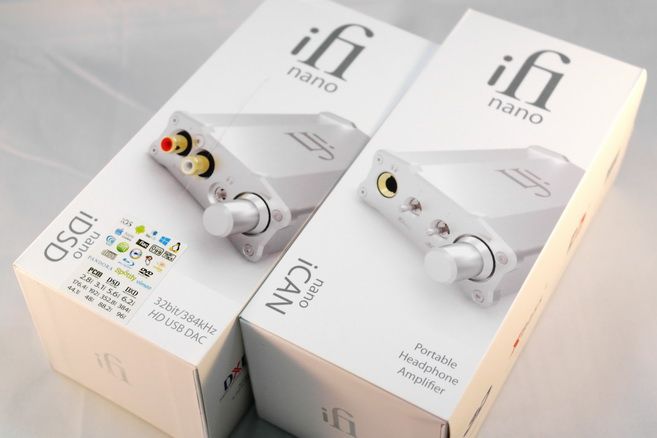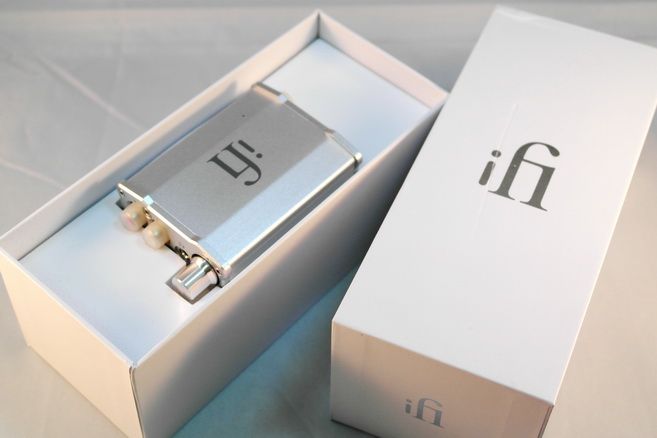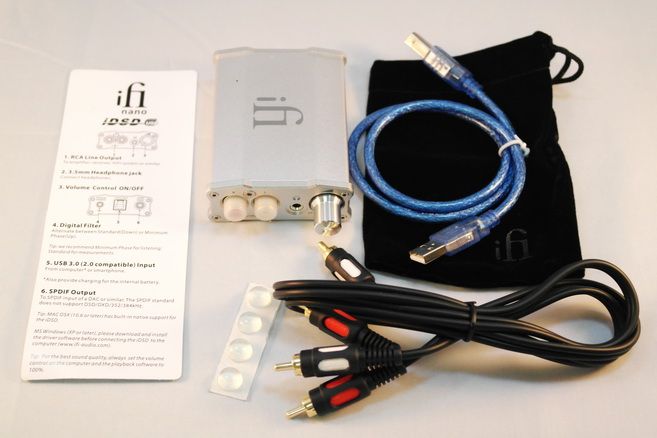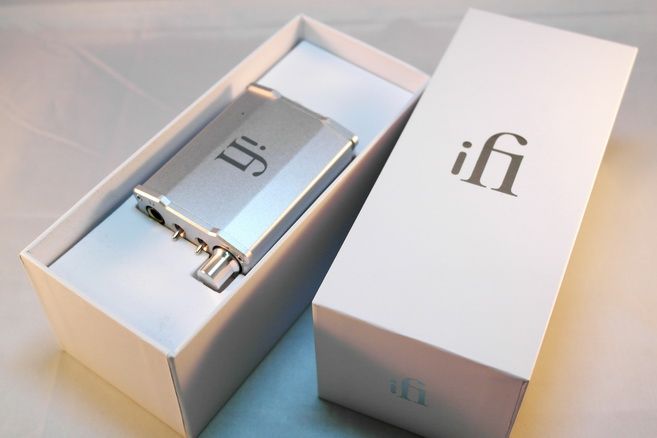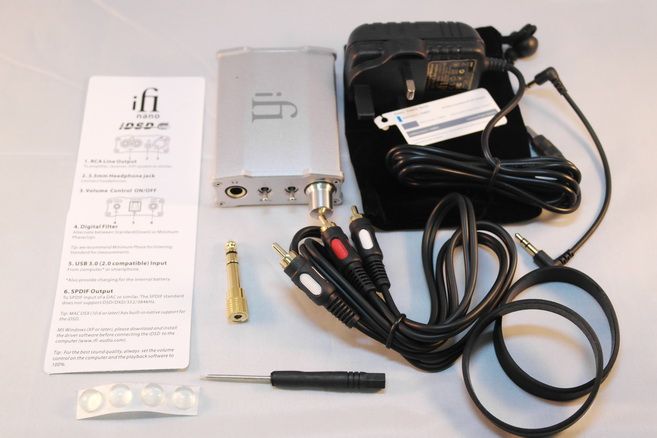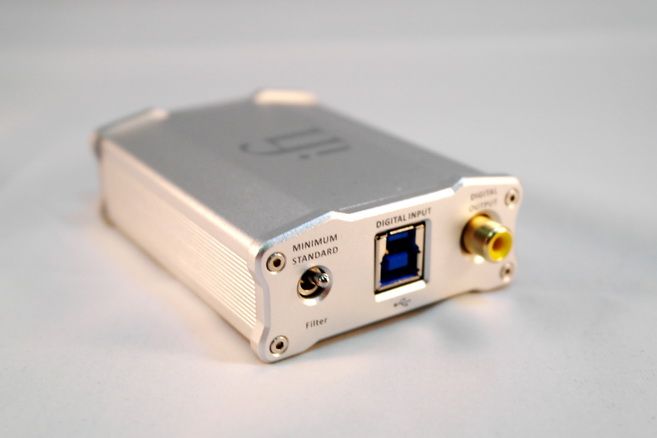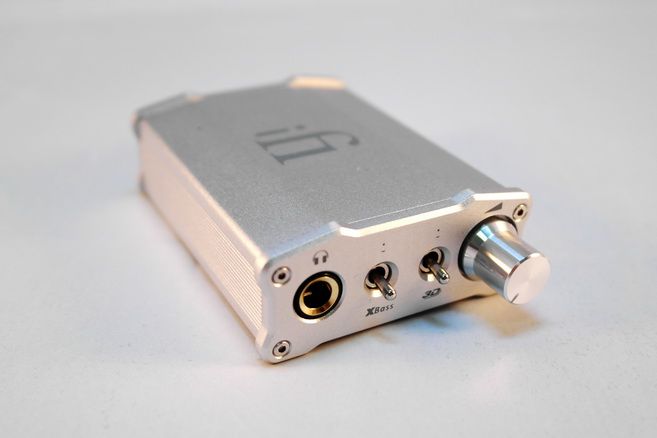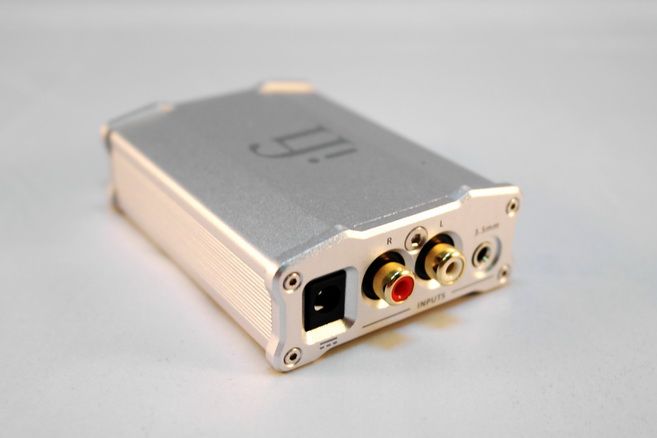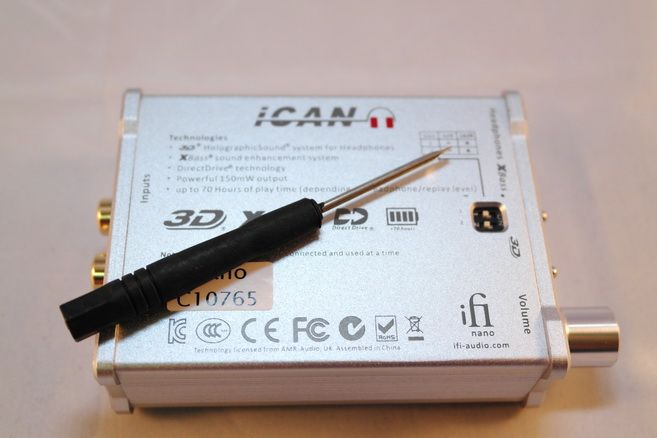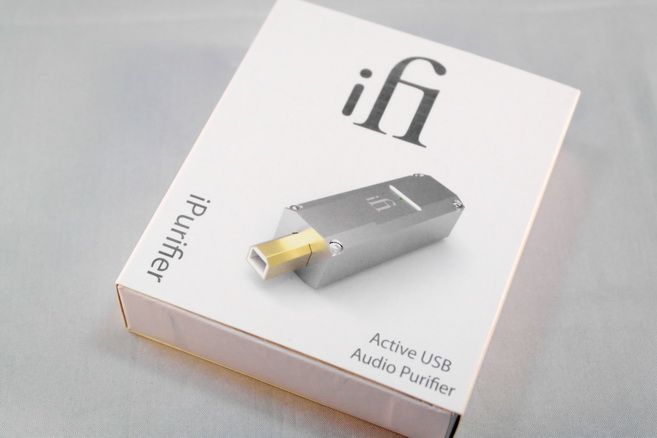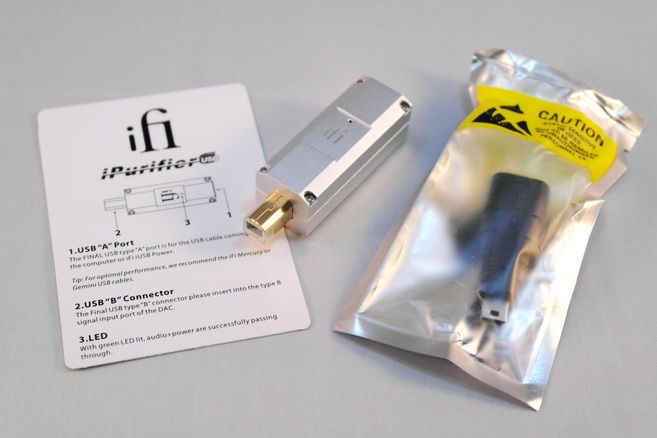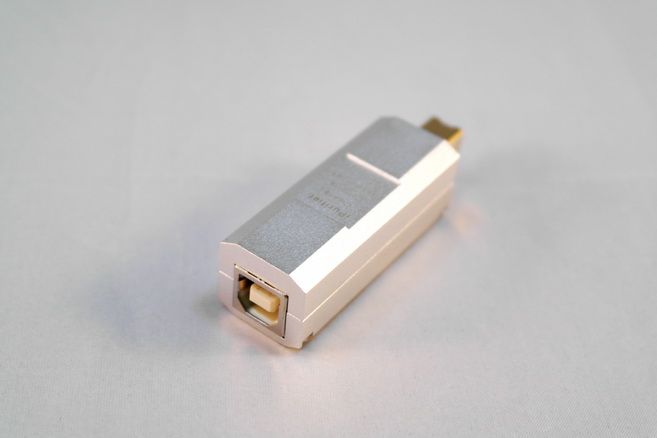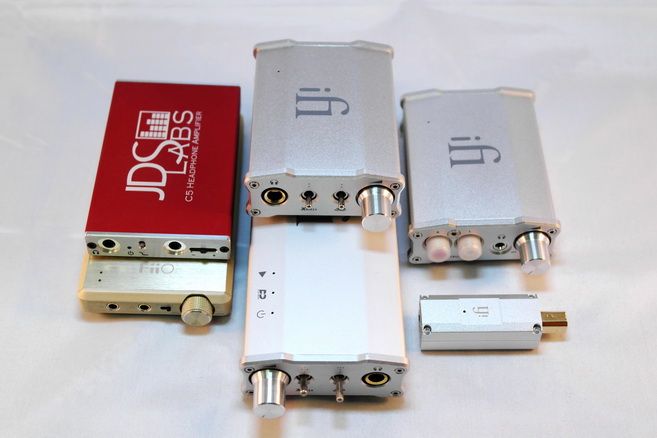[Impression] iFi nano iDSD and iCAN with a splash of iPurifer
iFi Audio has gained a great success over its Micro line of small sized desktop gears, and now it is pushing into the portable world with the Nano series. The nano iDSD is USB DAC that not only works with PC, but also has OTG support for the iDevice with OS7 (via camera connection kit / CCK) and Android that have USB Audio Class driver built-in (*for older Android that doesn’t have the driver, there is still a chance that USB Audio Player PRO will work). The nano iCAN on the other hand is a pure portable amp, but infused with the magical XBass and 3D Holographic Sound we have seen on the micro iCAN. Both are retailed under US$200.
Spec
iDSD nano
iDSD nano
Power Source: Battery/USB Bus power
DAC/Amp always run on battery
Battery Life: ~10 Hours playback*
Formats: 44.1/48/88.2/96/176.4/192/384kHz PCM
2.8/3.1/5.6/6.2/11.2/12.4MHz DSD
353/384kHz DXD
Bit-Perfect DSD & DXD DAC by Burr Brown (1-DAC Chip; 2-Channel; 4-Signals)
Filter: PCM: Standard/Minimum Phase digital (selectable)
DSD: Standard/Extended Range analogue (selectable)
DXD: Bit-Perfect Processing, analogue filter (fixed)
Input: USB 2.0
Compatible with iPhone, iPod, iPad and Android Devices USB-OTG
Output: SPDIF RCA (only PCM up to 192KHz)
Audio RCA
3.5mm Headphone
Dynamic Range: over 104dB
THD &N (35mW): Less than 0.005%
THD &N (Line): Less than 0.005%
Output Power (16R): over 130mW
Output Voltage: over 1.65V (over 100Ω)
Output Impedance (Zout): Less than 1Ω
Power Consumption: Less than 3W (charging battery and playback together)
Dimensions: 87(l) x 68(w) x 28(h) mm
Weight: 162g (0.43lbs)
iCAN nano
iCAN nano
Power Source: Battery / external 9V
Battery Life: ~70 Hours
Input: RCA Stereo
3.5mm
Output 6.3mm Headphone
3.5mm adapter included
Analogue Processing / EQ: X-Bass, 3D Sound
Gain: 6dB/18dB (selectable)
Input Impedance: 100k
Output Impedance: Less than 1 ohm
SNR: 112dB(A)
THD &N (100mW): Less than 0.02%
Output Power (32R): 150mW (external power)
Dimensions: 87(l) x 68 (w) x 28 (h) mm
Weight: 160g (0.35lbs)
Accessories and Build Quality
Both gears come in pretty standard iFi while hard paper box, which we have seen on the micro line. With nano iDSD, you will get an RCA cable, an USB cable, a soft pouch, 4 rubber feet sticker and a pretty simple manual. With nano iCAN, you get the same RCA cable, soft pouch and rubber feet sticker, plus a 6.4mm-to-3.5mm adapter, 2 rubber bands, a small screw driver that is meant to help on pushing the gain switches, and a 9V iFi Ultra-Low-Noise power adapter. Two accessories that I wish iFi had included are a lower profile 6.4mm-to-3.5mm adapter and a short microUSB-to-USB-B OTG cable (*and I reckon a short USB-A-to-USB-B cable for the Apple foes). Both are actually not that easiest thing to find, but I was eventually able to source them from TaoBao myself. While the included 6.4mm-to-3.5mm adapter is fine by itself, it is really quite protruding with the 3.5mm plug from the headphone. I was able to find a lower profile version of the adapter that is 6mm lower. Well, every bit helps when you are traveling around. As for the OTG cable, there simply isn’t that many places that you can find OTG cable for an USB-B socket.
Build quality is pretty much top notch for both the nano, which isn’t surprising as we have seen such level of quality on the micro series. LED indicator is located on the top, near the rear, with different color indicating different status. The shape of the housing is a bit awkward for a portable device, mainly due to the irregular shape of the front and back plate. The overall design of the nano series is pretty much like the micro series but half in length. Some of the elements that make perfect sense in the more desktop oriented micro series do look a little odd in a portable setting – such as RCA sockets, 6.4mm socket in nano iCAN and the USB-B socket in nano iDSD. I would think 3.5mm socket and micro USB might be more appropriate, as far as convenience is concerned, even though they are not that big of a deal. Beyond those, both nano are well designed and built.
iDSD nano
Battery Life
Nano iDSD can be run on both battery and USB power. If you switch it on before connecting to a PC or smart device, then it will run on pure battery power until the battery is flat. If you switch it on after connection, it will begin recharging. That makes it easier for the use with smartphone as many will reject USB DAC that draw too much power. The quoted battery life is about 10 hours on battery, which is pretty spot on from my own experience. For the most part, it will last around a day of normal usage before needing to recharge. That shouldn’t be a problem given most modern day smartphones probably won’t run much longer as well.
Nano iCAN on the other hand can run for a very long time before a recharge is required. The official number is around 70 hours. I haven’t actually drained the battery dry to test the battery life but it does seems to last like forever with a single charge. The only minor complaint I have with the nano iCAN is that it can only be recharged with the ULN adapter, which means you have to bring it with you on a long travel. The upside is that nano iCAN has more power when plugged in. So it is the case of win-some-lose-some.
iCAN nano
The gain switch on the bottom of nano iCAN
Gain, Hiss and EMI
The max voltage output on the nano iDSD is about 1.66V, pretty close to the 1.6V quoted in spec. It is not full 2V line level, but it should be plenty for portable use. From my observation, the RCA socket on the front is linked to the 3.5mm headphone socket and both are controlled by the volume knob, so the nano iDSD doesn’t really offer a line-out. According to iFi, the volume knob is actually a digital control over analog attenuation so you won’t lose any digital resolution by using it, yet it should offer near perfect channel balance at any volume. My measurement over the voltage output pretty much confirm that the channel balance is indeed perfect. They also point out that turning the volume to max essentially remove any analog attenuation and the signal should be at its best SNR, to approximate a line-level signal. Hiss is pretty good. Even with the hiss prone Shure SE530, I can’t hear any until the volume knob has passed around 2 o’clock, and that’s way too loud in normal listening with SE530. EMI is quite excellent on the nano iDSD as it remains in total silence right next to a smartphone when receiving call.
Nano iCAN offers two levels of gain, 6dB and 18dB. I’ll consider both being too high for IEM and sensitive headphone. You will probably want a low gain between 0~3 dB for IEM. As a result, hiss is quite noticeable with SE530 and I assume it will be the same for most of the sensitive IEM. EMI is also not particularly good as it is quite noticeable during call. That means the nano iCAN won’t be a good pairing with smartphone in general. Also, there is click and pop during startup and shutdown. Not very severe, but I’ll recommend unplugging headphone before startup / shutdown, especially if your headphone is quite sensitive. Unlike nano iDSD, the volume control in nano iCAN is fully analog, so there is some channel unbalanced coming from the volume pot when it is under 9 o’clock.
A comparison of the stock 6.4mm-to-3.5mm adapter (left) and the low profile adapter I found (right)
Sound Quality and EQ
As usual, I started my sound quality review on amp and DAC with an RMAA measurement. With nano iDSD, when measured under 16bit 48kHz PCM, you can clearly see the difference between the Standard and Minimum Phase filter used (selectable at the back of nano iDSD). Standard filter only has a tiny, inaudible -0.2dB roll off near 20kHz; with Minimum Phase filer however, it is a more noticeable -3dB @ 20kHz. If I am not mistaken, it is likely a Butterworth filter we have seen on many Hifiman players before. The filter selector switch also engages different filter during DSD and DXD playback as well, but I am not that interest in DSD/DXD so I won’t go into detail about them. Beside the effect of the filter, the rest of the frequency response is about as flat as it can be. With nano iCAN, the frequency response is also flat from 20Hz to 20kHz. The rest of the RMAA result has revealed no problem with either nano – noise, dynamic range, stereo crosstalk, etc are all fairly respectable. Per my measurement, output impedance for the nano iDSD and nano iCAN are both well below 1 ohm. Output current on the nano iDSD is low but adequate, but decently abundance on the nano iCAN. Overall, I didn’t find anything wrong during measurement.
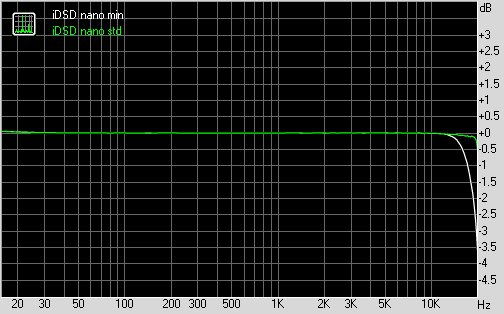
The Standard filter vs Minimum Phase filter in nano iDSD.
iCAN with and without XBass enable
From my own personal experience - when it comes to USB DAC + amp, the common trend for most manufacturer is that they start with a good amp section first, then squeeze in a DAC that is just adequate for the job. Therefore many of them are more of an amp than they are a DAC. On the nano iDSD however, I’ll say you are getting a hell lot more of a DAC than an amp. If I am not mistaken, iFi is using the TI TPA6130A2 as nano iDSD’s headphone driver. It is a chip we had previously seen on FiiO E5 and E7. While it is not bad per se, it isn’t great either. It will drive your typical headphone well enough, but it doesn’t quite have the wow factor of a really good, full blown amp section. The good news is that nano iDSD does sound better than an E7, no doubt thanks to the far more mature DAC section, but you can still detect a sense of warmness that is typical to the TPA6130A2. Where nano iDSD really shine is when it is used as a source to feed into a better amp.
Yes, technically you are double amping, but the result is well worth the effort. [update] According to iFi, technically TPA6130A2 only acts purely as the buffer stage of the DAC when the volume is turned to max, so it is not double amping per se. Another area that nano iDSD distinguishes itself is as an OTG devices for smartphone. While nano iDSD might not be the best sounding USB DAC there is, it is still far better than the built-in audio section of most smartphone out there. If you are using Android, with third party app like USB Audio Player PRO, you can even have full HD playback without a problem, PCM and DSD included.
One of the reason why I think nano iDSD is more of a DAC is how many features that iFi is able to pack inside. In the heart of nano iDSD sits one of TI’s top of the line DAC chip, the DSD1793. If you were to look up its datasheet, you will find it doesn’t support as much native DSD/DXD decoding as iFi has claimed. How did iFi do it then? Well, they were able to dig up some hidden features that are designed into the chip but not officially documented. Then they develop a custom XMOS solution to enable all those extra stuffs that you won’t find on any other DSD1793 implementation outside of iFi. The result is a sub$200 USB DAC that has features than usually belong to DAC that is priced in the thousands. As I have said, I am not that into DSD / DXD myself. But if you looking for a DAC that supports DSD / DXD in real native decoding, I don’t think you will find another USB DAC that does them all for such a price tag, especially one that also works well with smartphone..
So how about nano iCAN? From what I can tell, the basic amp topology seems to utilize an OPA1642 for gain stage, followed by MAX9722 as buffer. In between them, there are the Xbass and 3D Holographic Sound that I have nothing to say but praise for. As I have said on another review, MAX9722 can go from mediocre to really good, depends on the implementation. iFi has utilized it quite successfully on the micro iDAC, and the new implementation seems to work fairly well on the nano iCAN too. Subjectively speaking, nano iCAN doesn’t quite have the kind of maturity and effortlessness found on JDS Labs C5, but it has no problem matching up to FiiO E12. With E12, you get a sense of tighter control, power and intimacy. With nano iCAN, it is more neutral with better clarity and a really wide soundstage, even before the EQ is turned on. All and all, I won’t categorize nano iCAN as a top-tier portable amp in the sub-$200 price bucket, but it is definitely a very close runner-up.
The thing that really makes nano iCAN unique is however its XBass and especially the 3D Holographic Sound EQ. Sometime hardware EQ can be over implemented in portable amps, such as the case of C&C BH, where it helps a lot on some music but also ruins the whole image on others. The way iFi does its EQ is much gentler yet remains effective. They do exactly what they are meant to do without making anything sounds artificial or out of place. The degree of refinement is something I haven’t experienced on EQ from another brand of portable amp.
iPurifier
To explain it in a simple way, I guess you can say that iPurifier is a kind of EMI filter for USB transmission. I have tried it on my desktop setup, with both nano iDSD and micro iDAC, but doesn’t found it to make any noticeable difference. I do however find that it darken the background when pairing with my Xperia Z2 + nano iDSD a bit, though the effect is pretty subtle. Given it is meant to filter EMI, it makes sense as such since my desktop setup hasn’t really known to have suffer any EMI issue at all. I guess iPurifier is one of those devices that would really help if there is already a persistent case of EMI over the USB connection. Otherwise, you might be able to get away without one. It is more of a fine tuning tool rather than an instant improvement.
Just an extra note – iPurifier comes with an USB-B to mini USB adapter for the portable USB DAC, but I do hope it has an USB-B to micro USB adapter as well, since micro USB has become more and more dominant even among small USB DAC.
Size Comparison (from left): JDS Labs C5, FiiO E12DIY, nano iCAN, micro iCAN, nano iDSD, iPurifier.
Sum-up
I was thoroughly impressed by the micro series when they hit the market. While the nano series might not be quite the big smasher on performance as their elder siblings, they are themselves no sloth either. iFi Audio has managed to pack in some unique features to both nano iDSD and iCAN to make them stand out from the sea of portable amps and DAC in the market, while still makes sure they stay competitively priced. That’s no small feat on its own.
A thanks to iFi Audio for the samples.




